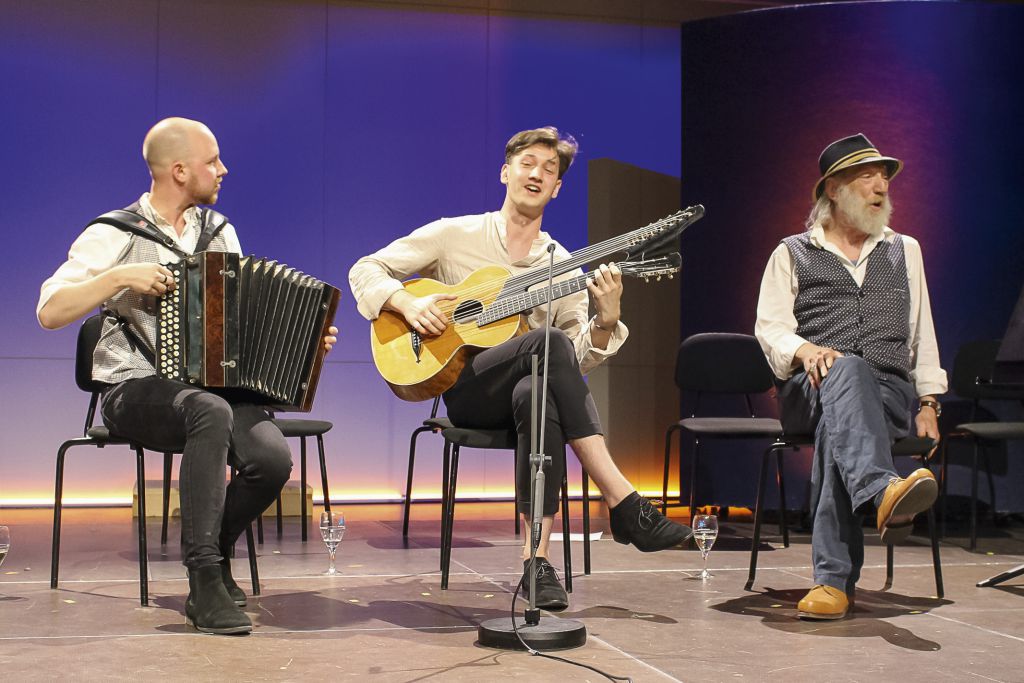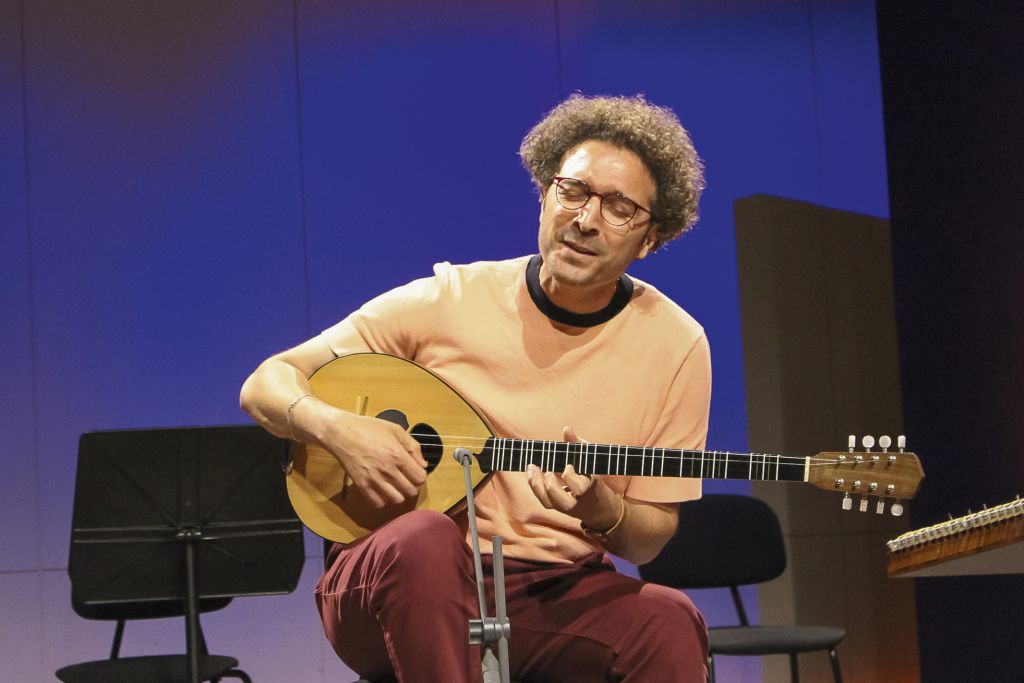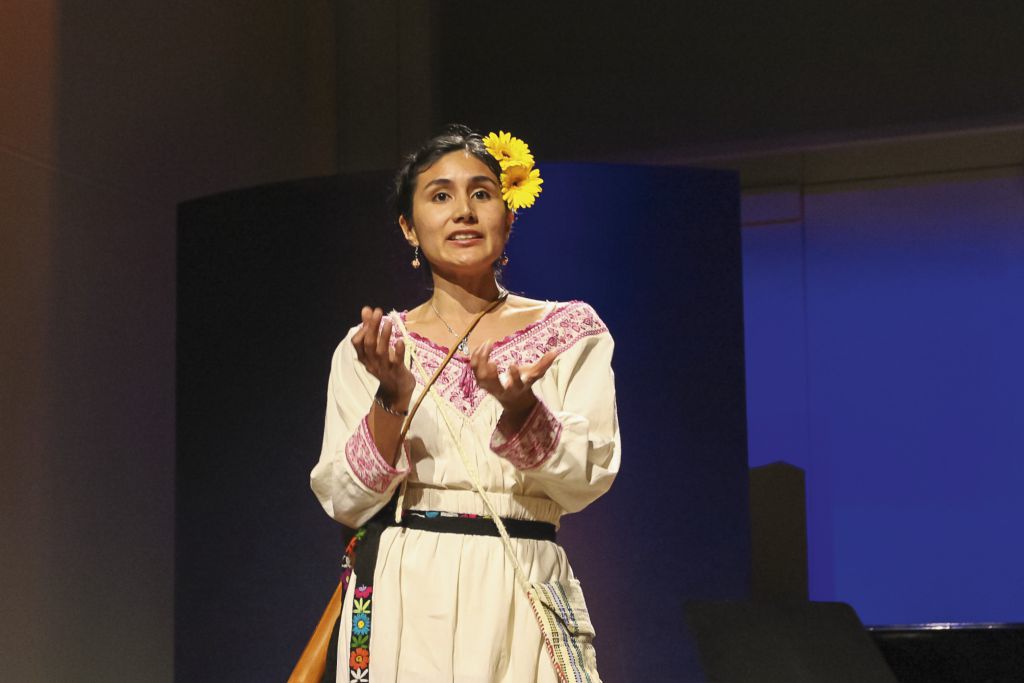Ein Jahreskonzert der Studierenden des Masterstudiums Ethnomusikologie
Es war ein Meilenstein in der Entwicklung des Instituts für Volksmusikforschung und Ethnomusikologie, aber auch der mdw, als am 24. Mai die Bühne des Joseph Haydn-Saals für ein Fest der musikalischen Diversität genützt wurde. Das Institut hat in seiner nunmehr 57-jährigen Geschichte zwar immer wieder sehr unterschiedliche Musikstile – von der österreichischen Volksmusik bis zum indonesischen Gamelan – in die Universität hineingetragen und in unterschiedlichen Locations zur Aufführung gebracht. Aber diese Musiken wurden von außen geholt, die Meister_innen kamen aus unterschiedlichen Ländern oder Communities. Diesmal waren es Studierende der mdw, die in einem Jahreskonzert eine faszinierende Vielfalt an Musiksprachen präsentierten. Die Voraussetzung dafür war die Etablierung des wissenschaftlich-künstlerischen Masterstudiums Ethnomusikologie im Wintersemester 2019/20. Es ist seither möglich, eine künstlerische Zulassungsprüfung in jedem Musikstil abseits westeuropäischer Klassik oder westlicher Popularmusik zu machen und jenen im Laufe des Studiums zu vertiefen. Diese an der mdw außergewöhnliche Offenheit wurde anfangs mit Skepsis betrachtet: Wie soll der musikpraktische Unterricht funktionieren? Wie finden wir Lehrende, Expert_innen? Das Konzert hat gezeigt, dass es wunderbar funktioniert.

In der Praxis ist es natürlich eine große Herausforderung, künstlerischen Schwerpunktunterricht in traditionellen Musik- und Tanzstilen ohne jegliche stilistische Einschränkung anzubieten. Ein Blick auf die internationale Universitätenlandschaft zeigt, dass jene wenigen Universitäten, Musikhochschulen und Konservatorien, die in der künstlerischen Lehre über das angestammte musikalische Lehrangebot in westlich klassischer Kunstmusik und (schon durchaus seltener) westlich geprägter Popularmusik hinausgehen, oftmals eine feststehende Auswahl bieten und damit einen neuen Kanon kreieren. Dieser Kanon an traditionellen Musikstilen umfasst oft größer gefasste Regionalstilistiken und hängt nicht selten von den musikalischen Expertisen der fix angestellten Lehrenden ab. Studierende haben dann beispielsweise zwischen Balkanchor, Gamelanorchester und indischer Sitar zu wählen.

Genau dieses festgelegte Angebot hat die mdw in der Konzeption des künstlerischen Studienbereichs im neuen Masterstudium Ethnomusikologie vermieden. Studierende können ihren eigenen künstlerischen Interessen nachgehen und ihre spezifischen musikstilistischen Erfahrungen einbringen. Für den künstlerischen Schwerpunktunterricht wird demnach individuell mit den Studierenden nach geeigneten Lehrpersonen gesucht. Alternativ können Studierende außerhalb der Universität künstlerische Lernerfahrungen sammeln, die ihnen dann für den Schwerpunktunterricht angerechnet werden. Gerade im Bereich der traditionellen Musik ist diese Möglichkeit sehr wichtig, da sich viele Musik- und Tanzstile nur schwer in ein institutionalisiertes und akademisches Vermittlungssetting pressen lassen.
Dieses flexible System führt zu einer beeindruckenden Diversität an musikalischen Stilen am Institut. So waren beim Jahreskonzert der Studierenden Wienerlieder neben burgenlandkroatischen Volksliedern zu hören; die persische Santur traf auf das Tiroler Hackbrett, mexikanische Son-Jarocho-Lieder folgten auf ein Tango-Argentino-Streichensemble und bosnische Balladen; mazedonische Liebeslieder, Klezmerklarinette mit Akkordeon, Jodler und Ländler in alpenländischer Instrumentaltradition fügten sich in ein fulminantes Programm. Ein großes Ensemble von Spieler_innen der persischen Rahmentrommel Daf, ein Wiener Schrammelquartett, irische und schottische Instrumentalmusik und Plena aus San Juan waren ebenso zu hören wie von der Bouzouk begleitete kurdische Lieder aus Syrien.

Das Jahreskonzert 2022 war für viele Studierende der allererste Auftritt an dieser Universität. Es war nicht nur das erste Konzert seit Bestehen des Studiengangs, sondern auch der erste öffentliche Auftritt seit der mehr als zwei Jahre andauernden Pandemie. Der mitreißende Abend war ein Beweis für die Resilienz und Ausdauer unserer Studierenden bei der Überwindung der Herausforderungen des Lernens in Zeiten von Lockdowns und Fernunterricht. Für viele war es der Anreiz, wieder vor einem Livepublikum aufzutreten, der diesen Abend zu einem Erfolg machte. Das Institut bedankt sich für die Unterstützung der über 120 Besucher_innen, die diesen Abend begleitet haben, sowie bei allen, die zum Gelingen beigetragen haben. Wir hoffen, sie bei der zweiten Auflage des Jahreskonzerts im Frühjahr 2023 wiederzusehen.

